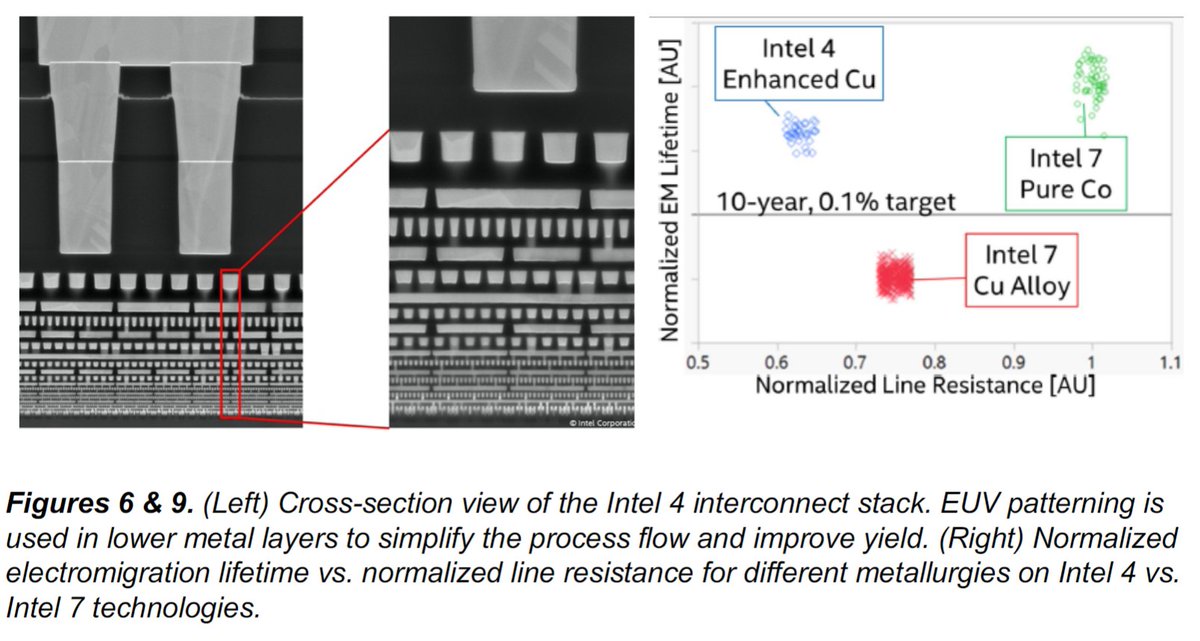
1/n #HotChips2022 @hotchipsorg talks:
🔼 Day 1 Keynote, @Intel
@PGelsinger: Semiconductors Run The World
🔼 Day 2 Keynote, @Tesla
Ganesh Venkataramanan: Beyond Compute - Enabling AI through System Integration
🔼 Day 1 Keynote, @Intel
@PGelsinger: Semiconductors Run The World
🔼 Day 2 Keynote, @Tesla
Ganesh Venkataramanan: Beyond Compute - Enabling AI through System Integration
2/n GPUs and HPC
▶ @NVIDIA Hopper, Jack Choquette
▶ @AMD Instinct MI200, Alan Smith
▶ @Intel Ponte Vecchio, Hong Jiang
▶ Biran BR100 GPGPU, Lingjie Xu
▶ @NVIDIA Hopper, Jack Choquette
▶ @AMD Instinct MI200, Alan Smith
▶ @Intel Ponte Vecchio, Hong Jiang
▶ Biran BR100 GPGPU, Lingjie Xu
3/n Integration Technologies
▶ @LightmatterCo Photonic Wafer Scale Substrates, Nicholas Harris @theanalognick
▶ @IntelTech FPGA for RF, Tim Hoang
▶ @RANOVUS Optical ASICs, Christoph Schulien
▶ @SamsungDSGlobal CXL Memory Expander, Sung Joo Park
▶ @LightmatterCo Photonic Wafer Scale Substrates, Nicholas Harris @theanalognick
▶ @IntelTech FPGA for RF, Tim Hoang
▶ @RANOVUS Optical ASICs, Christoph Schulien
▶ @SamsungDSGlobal CXL Memory Expander, Sung Joo Park
4/n Academia
▶ @Yale Low Power Fabric for Brain-Computer Interfaces, Abhishek Bhattacharjee
▶ @ETH_en SoC for Visual Proc in Nano-UAVs, Alfio Di Mauro
▶ @Stanford Reconfig Array SoC for Dense Linear Algebra, Kathleen Feng
▶ @Arm Morello, Richard Grisenthwaite
▶ @Yale Low Power Fabric for Brain-Computer Interfaces, Abhishek Bhattacharjee
▶ @ETH_en SoC for Visual Proc in Nano-UAVs, Alfio Di Mauro
▶ @Stanford Reconfig Array SoC for Dense Linear Algebra, Kathleen Feng
▶ @Arm Morello, Richard Grisenthwaite
5/n Machine Learning
▶ @GroqInc Tensor Streaming MP, Dennis Abts
▶ @UntetherAI 1456 RISC-V Core At-Memory Inference, Robert Beachler
▶ @Tesla DOJO Microarchitecture, Emil Talpes
▶ @Tesla DOJO System Scaling, Bill Chang
▶ @CerebrasSystems HW/SW Co-Design of WSE, Sean Lie
▶ @GroqInc Tensor Streaming MP, Dennis Abts
▶ @UntetherAI 1456 RISC-V Core At-Memory Inference, Robert Beachler
▶ @Tesla DOJO Microarchitecture, Emil Talpes
▶ @Tesla DOJO System Scaling, Bill Chang
▶ @CerebrasSystems HW/SW Co-Design of WSE, Sean Lie
6/n Network and Switches
▶ @AMD @XilinxInc 400G SmartNIC SoC, Jaideep Dastidar
▶ @JuniperNetworks Express 5 28.8 Tbps ASIC, Chang-Hong Wu
▶ @NVIDIA NVLink, Alexander Ishii
▶ @AMD @XilinxInc 400G SmartNIC SoC, Jaideep Dastidar
▶ @JuniperNetworks Express 5 28.8 Tbps ASIC, Chang-Hong Wu
▶ @NVIDIA NVLink, Alexander Ishii
7/n ADAS and Grace
▶ @NVIDIA Orin, Michael Ditty
▶ @NODAR 3D Vision, Leaf Jiang
▶ @NVIDIA Grace, Jonathon Evans
▶ @NVIDIA Orin, Michael Ditty
▶ @NODAR 3D Vision, Leaf Jiang
▶ @NVIDIA Grace, Jonathon Evans
8/n Mobile & Edge
▶ @AMD Ryzen 6000, Jim Gibney
▶ @Intel Meteor Lake and Arrow Lake, Wilfred Gomes
▶ @Mediatek Dimensity 9000, Hugh Mair
▶ @Intel Xeon D 2700/1700, Praveen Mosur
▶ @AMD Ryzen 6000, Jim Gibney
▶ @Intel Meteor Lake and Arrow Lake, Wilfred Gomes
▶ @Mediatek Dimensity 9000, Hugh Mair
▶ @Intel Xeon D 2700/1700, Praveen Mosur
9/n The Day 0 Tutorials
▶ CXL Overview
▶ CXL 2/3 Coherency, Fabric
▶ MLIR (Multi-Level Intermediate Representation) from Google, Nod.AI, Arm, Si-Five, Microsoft
▶ CXL Overview
▶ CXL 2/3 Coherency, Fabric
▶ MLIR (Multi-Level Intermediate Representation) from Google, Nod.AI, Arm, Si-Five, Microsoft
10/ That's all the talks, as of 24th May. Feels like a real chip conference this year, covering a lot of areas and not losing too much to ML. Looking forward to insights into Dojo, Optical, networking, the chip deep dives
#HotChips2022 @hotchipsorg
#HotChips2022 @hotchipsorg
• • •
Missing some Tweet in this thread? You can try to
force a refresh







